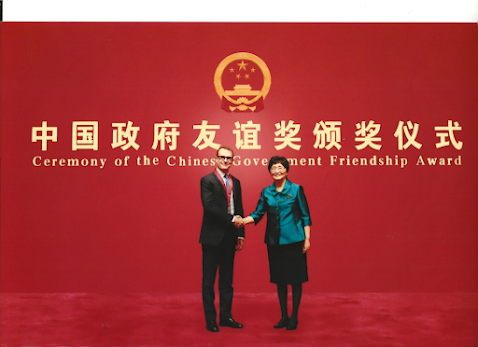Chinese White Dolphins Do not Communicate Across Groups? This May Bring Greater Crisis | CBCGDF Reports
Triphenyltin (TPT) is often used to make antifouling agents for ship hulls and underwater equipment, and low doses of TPT in the water environment may cause endocrine disorders and developmental stagnation.
A study published in the journal International Environment in 2020 found that the Chinese white dolphins and finless porpoises found in the Pearl River Delta in recent years have very high levels of TPT in their muscle tissue.
Of the 93 species of cetaceans in the world, about 38 species have been recorded in China. Among them, the Chinese white dolphin is relatively special, not only because it is crowned with the "Chinese", but more importantly because of its living habits-unlike other marine cetaceans, the Chinese white dolphin mainly lives in coastal and estuary environments with a water depth of 2-15 meters. These areas are often densely populated by human activities.
TPT is not the only threat facing the Chinese white dolphin population.
The situation of "population isolation" is causing a more lasting survival dilemma for the Chinese white dolphin species.
There are at least eight existing geographical populations of Chinese white dolphins in China. However, the marine mammal research team of the Institute of Deep Sea Science and Engineering of the Chinese Academy of Sciences found that in the case of an eight-year time span and an individual identification rate close to 100%, there was almost no individual exchange between the population on the west coast of Taiwan and the Xiamen-Kinmen population, which is only more than 170 kilometers away geographically. Coincidentally, no repeated identification of individuals was observed between the four geographical populations in southwest Hainan, eastern Zhanjiang, Beibu Gulf (Sanniang Bay subpopulation) and the Pearl River Estuary.
©John MK Wong, OceanWetlands
A population refers to all individuals of the same species living in a certain natural area at the same time. Different individuals within and between populations can reproduce offspring through mating, gene transmission and exchange. If individuals between different populations cannot freely exchange genes under natural conditions, they are often called isolated.
The ocean has connectivity, which ensures that marine organisms can migrate between sea areas during their life cycle and find suitable breeding and foraging places. It plays an important role in maintaining the diversity and stability of marine ecosystems and ensuring the genetic diversity of marine life.
The reasons for the "isolation" between different populations of Chinese white dolphins are multifaceted and complex, but they cannot be ignored. More research and attention are needed to maintain the genetic diversity, inter-population connectivity and effective population size of Chinese white dolphins in China.
Original Chinese article: https://mp.weixin.qq.com/s/7rJ4KVK_v-z8MrOr_jJeLQ
Translator: Daisy
Reviewed by Sara
Editor: Daisy
Contact: v10@cbcgdf.org; +8617319454776
Do you know? We rely on crowdfunding and donations. You have the opportunity to help an international movement to advance biodiversity conservation. Donate TODAY to power up the movement to make it a better world for all life.
Donation(501C3)Paypal: intl@wbag.org
https://www.paypal.com/donate?hosted_button_id=2EYYJJZ8CGPLE





Comments
Post a Comment